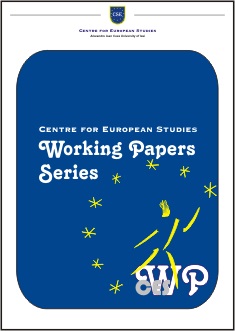REGIONAL DEVELOPMENT THROUGH GROWTH AND URBAN DEVELOPMENT POLES IN ROMANIA
REGIONAL DEVELOPMENT THROUGH GROWTH AND URBAN DEVELOPMENT POLES IN ROMANIA
Author(s): Marius Cristea, Stefana VarvariSubject(s): Economy
Published by: Editura Universităţii »Alexandru Ioan Cuza« din Iaşi
Keywords: growth poles; urban development poles; urban development policy; regional operational programme
Summary/Abstract: In 2008 the Ministry of Development, Public Works and Housing (now the Ministry of Regional Development and Public Administration) prepared the growth poles policy for Romania, establishing seven growth poles to be financed through the Regional Operational Programme 2007-1013, under the Priority Axis no. 1. For 2007-2013 there were also established 11 urban development poles. At present the Ministry is discussing with the European Commission the new Regional Operational Programme 2014-2020 in which the main policy lines regarding integrated territorial development also take into consideration the improvement of the quality of life and the “appearance” of towns and strengthening their role in the region. The main urban agglomerations (county seats) are seen as development engines of the regions. The authors analyze the results obtained and the problems that appeared at regional level in what concerns the projects financed under Axis 1 of the ROP 2007-2013 by answering two main questions: did they really had the estimated impact on the growth and urban development poles and on the regions? and was there really an integrated approach used? Based on the results obtained from the analysis of the previous programming period the authors try to recommend some improvements that could be taken into consideration for the development of the Integrated urban development plans and priority projects that are going to be financed by ESI funds under Axis 4 of the new ROP 2014-2020, recommendations that could be taken into consideration when preparing the Guidelines for applicants for this axis.
Journal: CES Working Papers
- Issue Year: 7/2015
- Issue No: 2A
- Page Range: 662-674
- Page Count: 13

